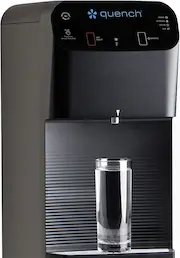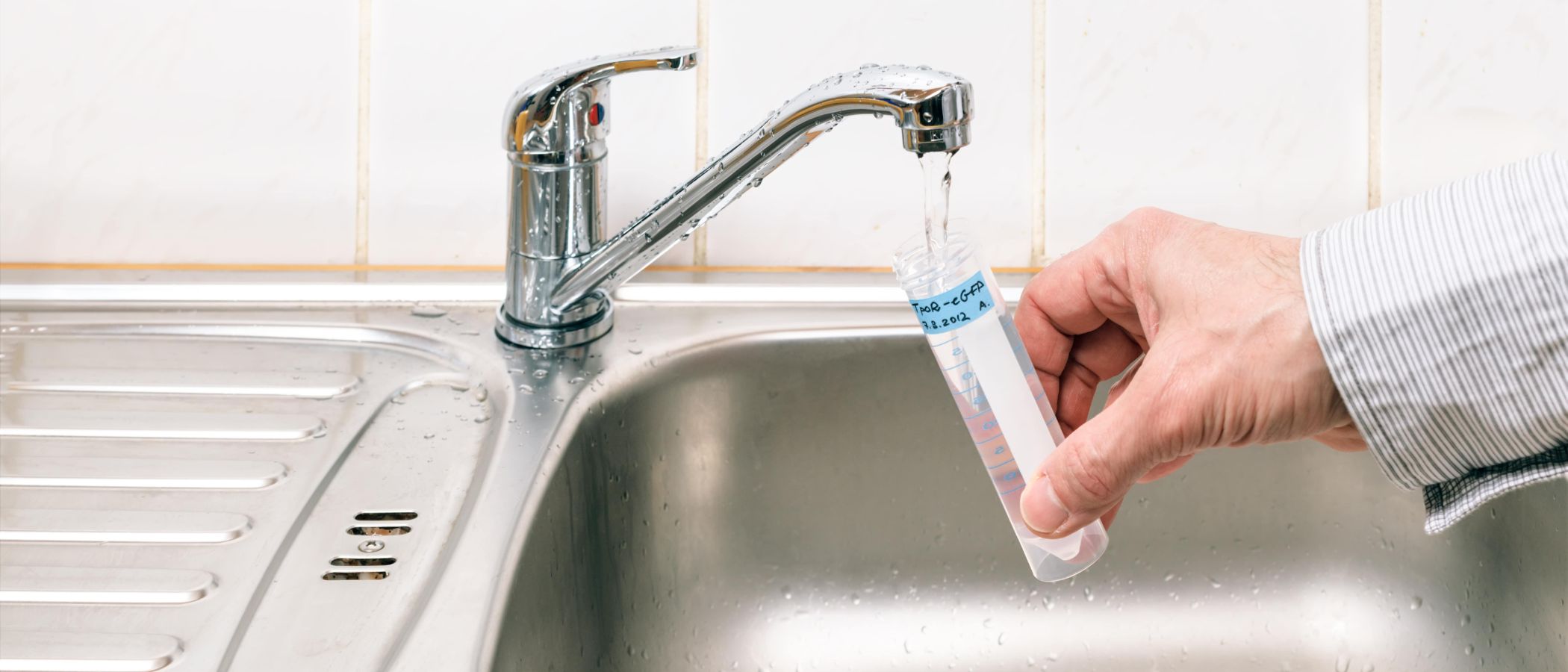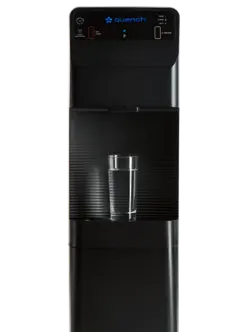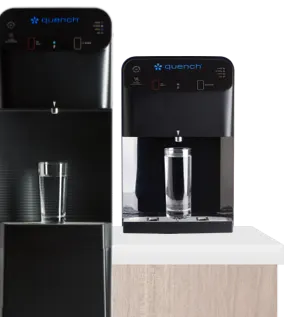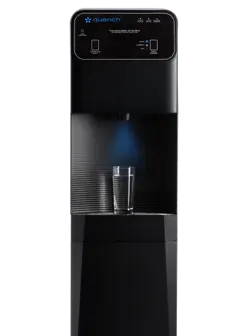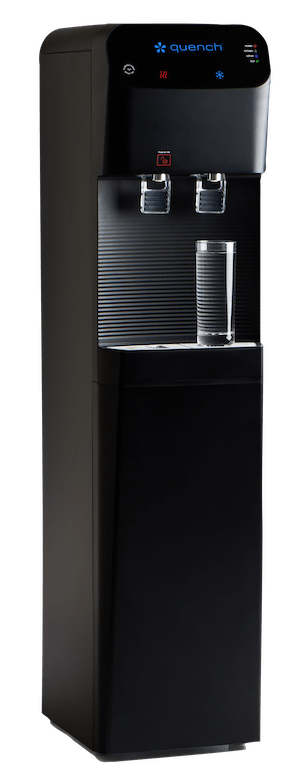Access to a clean water source has long since been recognized as an employee right by workplaces across the country. Organizations that work to ensure their valuable team members are properly hydrated are ultimately supporting greater efficiency, productivity, and morale in the long run. However, it’s important to keep in mind that not all water is created equal.
Recently, consumers and business leaders have become increasingly concerned about the presence of toxic chemicals in their water supply and their potential impact on human health. It’s critical to recognize that providing water to employees and customers will do little to encourage satisfaction and organizational improvement if the water source is negatively impacting their health.
Perfluoroalkyl and perfluoroalkyl substances (PFAS) have become an especially significant concern for organizations working to elevate their workplace water supply. In fact, there have been numerous media headlines flagging the existence of these potentially harmful chemicals in a wide range of consumer products. According to a report from CNN, numerous industries use PFAS on a daily basis, often directly impacting both the water we drink and the food we eat.
We’re taking a closer look at the negative effects of PFAS in workplace drinking water, and the best ways to reduce the possibility of exposure moving forward — to support the health and wellness of your employees, guests, and consumers.
The Ins and Outs of PFAS in Drinking Water
What Are PFAS?
When we talk about PFAS, we’re not limiting ourselves to one or even a handful of chemical compounds. In fact, this group of chemicals has been a key component in a considerable amount of mass-produced consumer and commercial products since their introduction in the mid-1940s. They were first tagged with the nickname “forever chemicals” by The Washington Post, with the ability to repel oil and water.
PFAS, or per- and perfluoroalkyl substances, are potentially harmful chemicals found in drinking water and a variety of common products — from food packaging and cookware to household items and firefighting foam.
Why Are PFAS an important growing concern?
PFAS are persistent in the environment and in the human body, which means they don’t break down easily and they can accumulate over time. As industries around the world — including aerospace, automotive, construction, electronics, and military — use these toxic chemicals in their day-to-day operations, it’s likely more workplaces will face exposure to PFAS in water and the surrounding environment.
The United States Environmental Protection Agency has already identified thousands of types of PFAS chemicals and there are around 10,776 polyfluoroalkyl substances currently in use across various industries, according to the agency’s toxicity database. This emphasizes the importance of organizations to prioritize PFAS monitoring while introducing solutions to elevate their water supply and water quality.
The consequences of PFAS in your workplace water supply
With such a sizable amount of PFAS chemicals to consider, some of those chemicals have been more widely studied than others. This means the full impact of PFAS exposure hasn’t been fully discovered yet.
However, research has already linked PFAS exposure to several public health concerns including:
- Thyroid disease
- Liver damage
- Decreased fertility
- High cholesterol
- Obesity
- Hormone suppression
- Ulcerative colitis
- Cancer
Unfortunately, these toxic chemicals inevitably leach into the environment, turning up in our public drinking water and wells. In fact, a 2019 report cited by Think Progress identified more than 600 wells and other public water systems spread across 43 states that had some level of PFAS contamination.
As a result of all of their pervasiveness and the growing possibility of exposure, more than 95 percent of the U.S. population has PFAS in their bodies, according to the Centers for Disease Control and Prevention (CDC). Organizations can be a valuable resource to employees and consumers by introducing water solutions that reduce the risk of exposure and associated health effects, to keep team members feeling their best.
PFOA and PFOS
Perfluorooctanoic acid (PFOA) and Perfluorooctane sulfonic acid (PFOS) are both members of the PFAS chemical group. While seemingly harmless acronyms to the average person, they have the potential of becoming toxic substances — capable of inflicting serious damage on both the natural environment and the human body. Similar to most plastic, PFOA and PFOS don’t break down and can build up over time. Although both of these types of PFAS have been voluntarily phased out by industries in the U.S., they continue to persist in the environment.
To muddy the waters even further, PFOA and PFOS are still produced internationally. This means that they are often delivered to the U.S. in the form of imported goods like carpet, leather and apparel, textiles, paper and packaging, rubber, and — most notably — plastics.
GenX
Originally created to replace the PFOA for manufacturing fluoropolymers such as Teflon®, GenX is still a relatively new chemical compound.
Studies to date have been limited, but a human health toxicity report issued by the EPA in October 2021 said that the chemical — which was initially thought to be safer than its predecessor — was capable of causing harm to sensitive internal organs, such as the liver and our reproductive systems. However, it should be noted that research into the health effects of GenX is still at an early stage and its long-term toxicity is currently under review — you can read the full EPA assessment here.
What Is the EPA Doing To Prevent PFAS From Entering Our Drinking Water?
As you’ve probably noticed, PFAS can be a scary and silent threat. With no taste or color, these chemicals are adept at impacting air quality, soil, and public water systems. But, the growing awareness of its presence and negative health effects on the public and the environment has led to stricter Environmental Protection Agency (EPA) initiatives and regulations. The EPA has offered new treatment options for PFAS in drinking water that include:
- Establishing methods to measure 14 PFAS compounds in drinking water.
- Identifying 5 treatment processes for PFOA and PFOS.
- Identifying all PFAS chemicals that are legally available for production and use.
- Providing national monitoring data for 6 PFAS in drinking water.
- Issuing advisories that let people know when PFOA and PFOS are detected in the local drinking water sources.
According to the EPA website, they are also working to include the development of:
- Additional toxicity values.
- Analytical methods for additional PFAS.
- Research into treatment methods for drinking water.
- A commitment to providing “meaningful, understandable, and actionable information” to the general public.
This PFAS action plan includes putting regulations in place and establishing public health advisories or recommendations for addressing the problems of PFAS at the source. In June 2022, for instance, the agency issued a press release detailing 4 drinking water health advisories and dedicating $1 billion in cumulative funding to states or communities that are “on the frontlines of PFAS contamination.” The next steps, the agency said, are a proposed PFAS National Drinking Regulation, a rule that is expected to be more fully developed in fall 2022.
While these systems and initiatives are designed to mitigate the risk of exposure to PFAS in drinking water, it’s important to keep in mind that there’s still a lot about these chemicals that researchers and partners don’t fully understand. As a result, organizations are increasingly in pursuit of strategies to improve their water quality and reduce PFAS levels — ultimately supporting employee health, better business results, and environmental protection efforts.
Implementing a Filtered Water System To Improve Your Water Supply
Toxic chemicals are an unwanted guest in workplace drinking water, but fortunately, there are ways to remove harmful levels of PFAS from your water supply. To drive hydration successfully, organizations need to provide their team members with a water system that not only delivers tasty and refreshing water but also has limited exposure to chemicals that are harmful to human health.
A water dispenser equipped with advanced filtration technology like a reverse osmosis system can eliminate off-tastes and colors associated with a variety of chemicals — with the added bonus that it can be a great second line of defense against PFAS that might be present in your public water supply. Advanced carbon filtration traps and removes impurities in drinking water, while reverse osmosis is a water purification technique that has been found to rid water of up to 99.9% of all contaminants and sediments.
You can find both advanced carbon filtration and reverse osmosis, along with 3 other advanced filtration technologies, in Quench point-of-use water dispensers. Quench water dispensers feature a proprietary 5-stage filtration system. Those 5 stages of filtration work together to prevent contaminants and impurities from reaching your end drinker and can improve overall health, wellness, mental well-being, and satisfaction in your workplace.
If your organization is ready to bring your water systems to the next level — Quench Water Experts can help. Not only will our experts point you in the right direction, but they are more than happy to give you a full and frank explanation as to why the combination of a public water system and a Quench Q-Series filtered water dispenser is a far more cost-effective and safer source of hydration than branded bottled water.
Find the Bottleless Water Dispenser That Is Right for Your Workplace With Quench
With the hidden dangers of PFAS top of mind for organizations, it’s time to stop them in their tracks. Bottled water might be convenient but there is no guarantee that the branded product that you hold in your hand has gone through the same rigorous filtration process that we offer through our quenchWATER+ technology.
High-quality water standards will always be our priority at Quench, and we understand that increasing daily water intake at work means introducing water that both tastes great and provides health benefits for valuable team members. Although PFAS are highly present in our everyday lives, the tools and solutions to limit their effects are already here. And, a bottleless water dispenser with advanced filtration technology will prove an important part of the puzzle.
Your workers, guests, and customers need access to a clean water source, and Quench water products have been designed to deliver a water supply that ticks all the boxes for a healthy lifestyle. Removing all the chemicals from the world might be a lofty goal, but holding your company accountable to high water quality standards is a great place to start.
Try our product finder to get matched with the bottleless water dispenser that’s best suited for your workplace drinking water needs, or get a free quote to get started.
